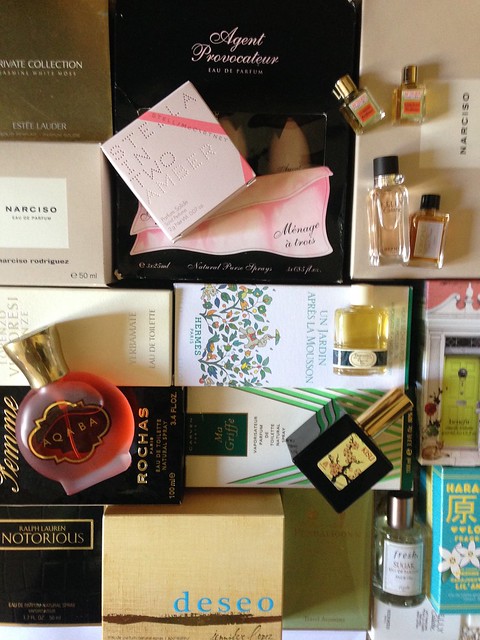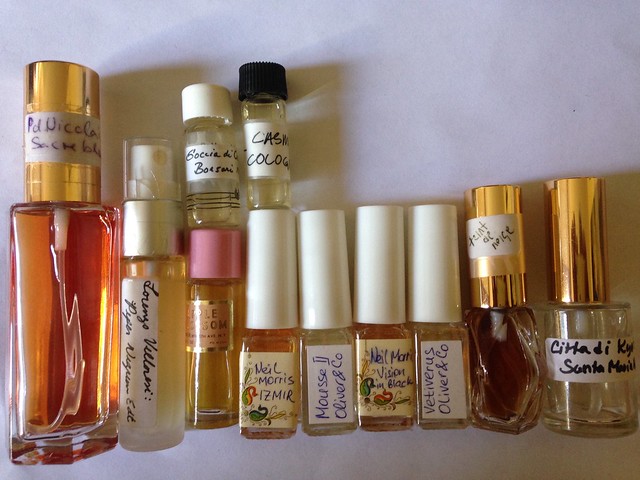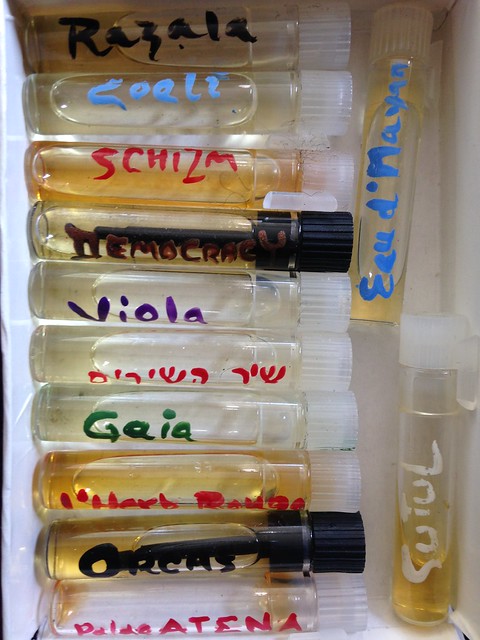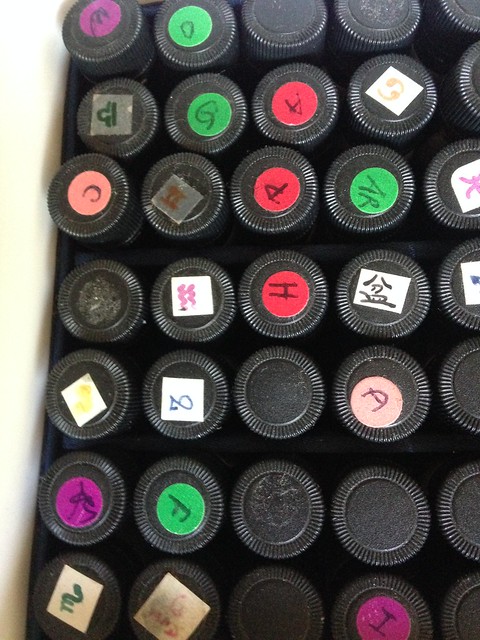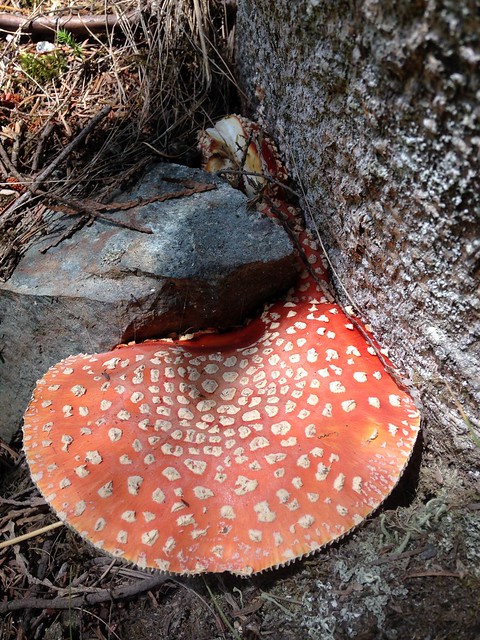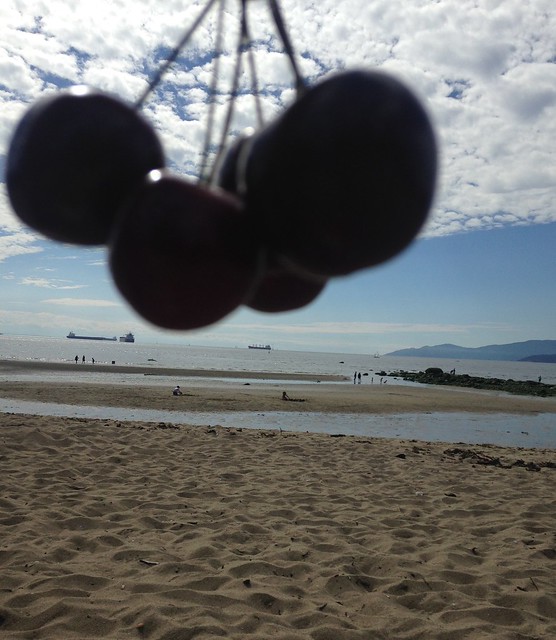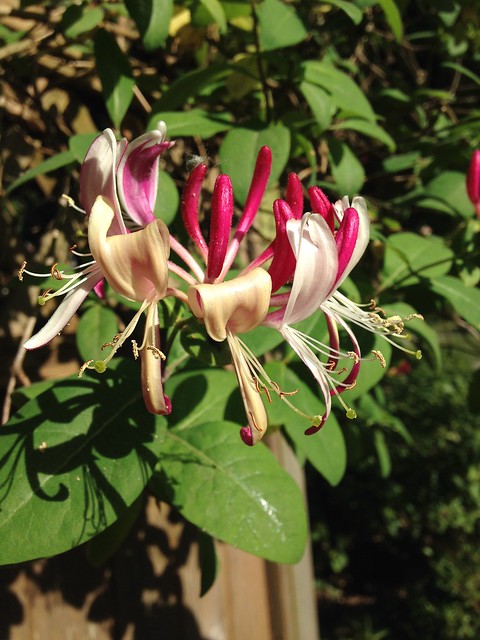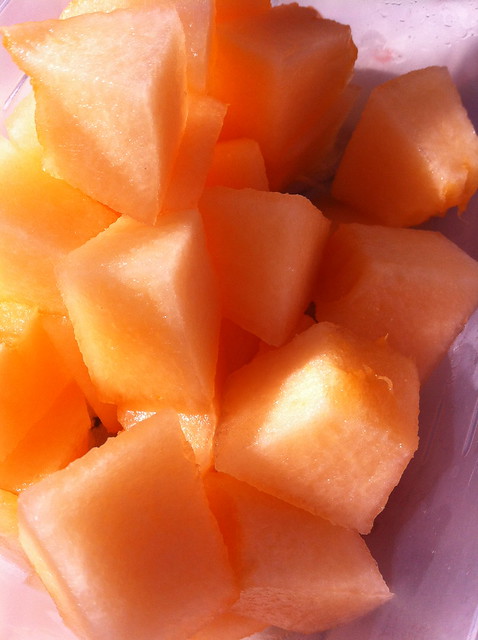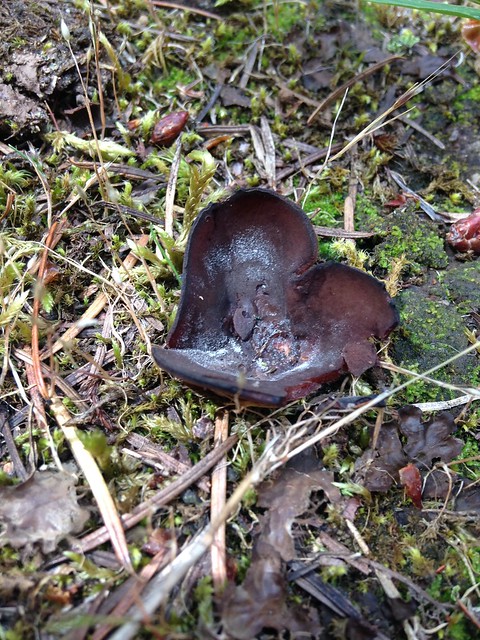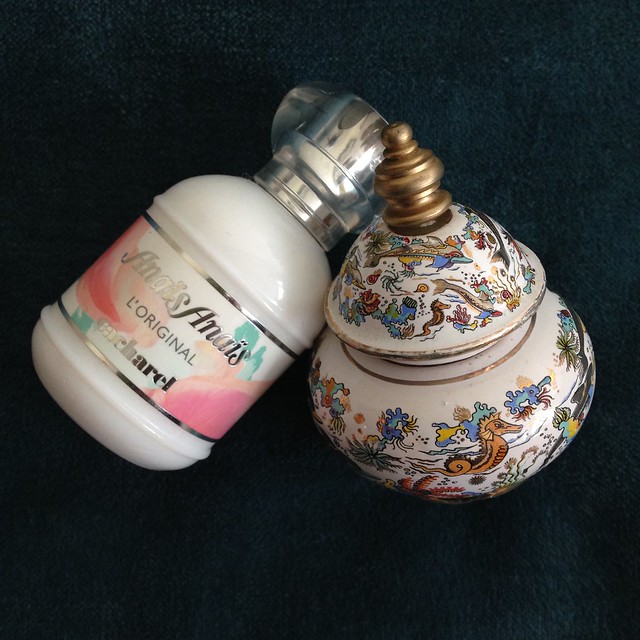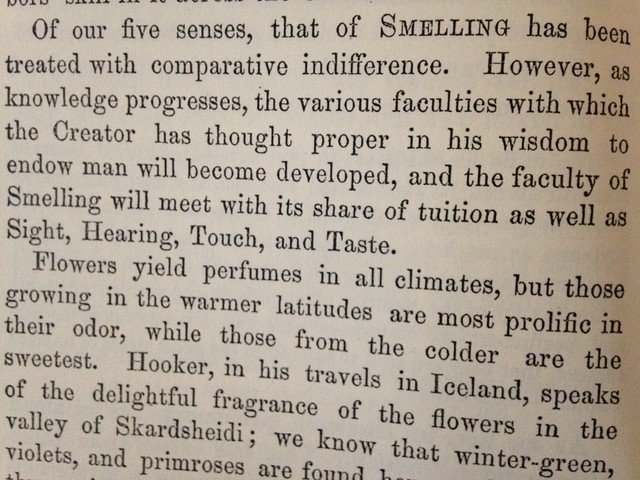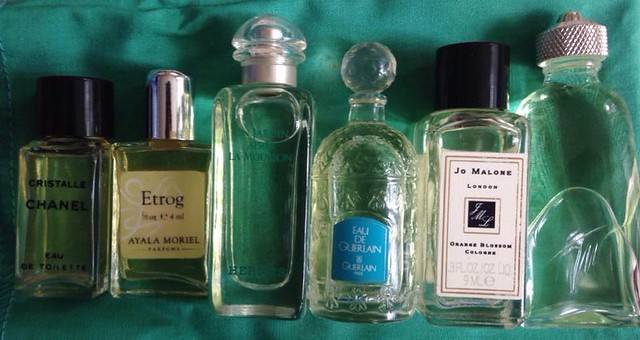
Citrus are universally liked, and you'd be hard-pressed to find anyone who does not find citrus notes appealing to at least some degree or another. Despite the fact that citrus trees are rather picky about growing conditions, their protective peel makes them easily transportable and therefore most people in the world, even in sub-polar climates are usually familiar with them. Growing up with a family citrus orchard, I've known many citrus varieties quite intimately, from twig to flower to fruit. Also, I've got plenty of fond memories from citrus-scented herbs that we'd grow in our herb garden and brew as relaxing and delicious tisanes: lemongrass and melissa (lemon balm) and lemon verbena (aloysia citriodora). The latter is perhaps one of my favourite smells from a very young age.
With all that being said - the words "interesting" and "citrus" do not generally go together in my world. Citrus are the one fragrance family that I don't care for - they are short-lived, lack depth and complexity, and generally leave me unimpressed. On days when I choose to wear citrus in the morning, I know that it will be covered with something else by lunchtime or at least early afternoon. They are fleeting, noncommittal, and therefore wearing them should be easy and fun.
Most citrus fragrances are like the fragrance equivalent of
ADHD kid in the classroom in the perfume world. They may get your attention quickly with their opening burst of freshness, and may even have a bit of an intrigue from the start; but this will quickly fade away, and give in to a yawn-inducing phase of the fixatives that were used (generally without much success) to make the scent last long(er). These tend to be along the lines of sandalwood, orris, benzoin tonka bean, musk, vetiver and sometimes a bit of deeper notes such as oakmoss or even patchouli. And it is often apparent that this phase was not very well thought through.
Disappointment from the cologne and citrus family can come in many forms, for example - trying to "upgrade" what needs to remain a very simple and humble. The delight of citrus is precisely in their simplicity and utilitarian origins. For example - in my humble opinion, Chanel's Eau de Cologne, which has a very balsamic heart, and a very woody, almost acrid dry down that tries to make it smell "expensive" and fit with the rest of the collection. I don't think this does much to the genre - not really creating anything new (it makes it very clear from the start that it wants you to think of it as an Eau de Cologne - yet pay an arm and a leg for it). Then, of course, there is the horrid modernized approach, loaded with Iso-E Super (Mugler's Cologne took that to the extreme, but it would be a lie to say it's the only one that tries to turn the natural cleanliness of citrus into a chemical treatment). And of course there are the faux high-class colognes, such as Tom Ford's Neroli Portofino, which is exactly how I'd imagined the WWII hookers in
Catch-22 to smell like - a cheap cocktail of linalyl acetate and bleached musk, bottled in an icy looking clear blue bottle that makes it look there is more to it.
Last but not least: many modern citrus and colognes are fathomed after the "tea" fantasy accord, and vice verse - many of the so-called "tea" perfumes are more like a different interpretation for the bergamot-linalyl acetate accord that is central to eaux de colognes, only with ionones added to the mix to create that ephemeral tea connotation. This genre gets me less annoyed than others, because there is something elusive about them, and they are so difficult to smell (I must be partly anosmiac to ionones) - and how can you get angry with something you can barely smell?
The following roundup is more than just a citrus list, but generally summarizes ten citrus treatments that work, and themes that I actually find interesting - or at least fun and enjoyable.
1. Orange Blossom Replacing Neroli:
The main challenge I have with eau de colognes is that they are dominated by neroli and petitgrain, two notes that simply don't smell too great on my skin - smelling sharp and overbearing even though they could be quite wonderful when not so dominant. I find that when orange blossom is used instead of neroli, this problem disappears and I can enjoy the citrus more. Also, more depth to the base notes also helps a great deal. Case in point is
Jo Malone's Orange Blossom Cologne, which is lovely, and Eau d'Orange Verte with which I fell in love when waiting in Heathrow between flights many moons ago. It remains my favourite citrus, and probably the only one I actually own.
Eau d'Orange Verte is undoubtedly one of the best citrus ever created, and never disappoints. Oh, wait, except that is was reformulated by Jean-Claude Elena to smell nothing like the glorious green bitter orange zest, neroli and oakmoss and cedarwood elegance that it used to be - replacing all this goodness with something flat, synthetic shadow of itself, whose only sorta-redeeming point is some green mango accord, which makes it a bit more interesting. But it is still disappointing nevertheless. Stick to the original!
2. Classic (Read: Old World) Eaux de Colognes:
As much as I try to love 4711, it just always smells too sharp, too linen-like on me. But guess what? It is not the only classic eau de cologne that deserves our love and attention, and not all of them are as sharp an dominated by neroli.
Eau de Guerlain is a prime example. It begins very fresh, classic eau de cologne accord with hint of mint. But it has more facets to it than what meets the eye at first. There are some florals in its midst, and the dry down is the famous guerlinade - tonka bean, orris, vanilla and even a tad of patchouli and oakmoss. There is a floral richness to it so if you want a "deep" eau de cologne fragrance, this is it. It lasts for a long time as a result, and also has different stages and evolves on the skin, inviting the wearer for wrist-re-sniffing rather than reapplying. At some stage the tonka bean is more apparent, and at a later stage the orange blossom surprisingly shines through.
I also fondly remember Eau de Clogne de Coq and Eau de Fleurs de Cedrat - but it's been many years since I've had access to either, so I can't pinpoint now what I liked about them. All I can say is Guerlain sure knows how to make citrus well (and more about that in a bit).
3. Spicy Citrus:
Citrus and spice are as old as potpourri. But this is not the only way to utilize this bacteria-busting combination.
Florida Water is a modern-ish play on the eau de cologne theme, using New World aromas such as Mexican lime and a healthy dose of cloves and cinnamon to create a mouthwatering, refreshingly disinfectant concoction for the tropics. Florida Water have become also an interesting part of Shamanism practices on North America, and are used for cleansing and multiple other purposes. This past couple of years I've been honoured to work with a
Angela Prider, local healer and shamanic teacher and practitioner, and have created an all-natural Florida Water type of fragrance for her, and customizing it for her particular energy work, which is greatly inspired by feminine archetypes from New Mexico, Ireland and Australia. I can't wait to share more with you - but I must wait till her website is up.
4. Citrus Fantasy:
Whenever I meet a citrus I actually
love, I usually discover it really belongs to the "Citrus Fantasy" sub-family. Which also proves that my citrus "problem" These truly are Chypre citrus compositions and can be very different from one another. They all have a prominent citrus top note, of course, but there is also something intriguing in the heart (more floral notes, for example) and of course there's got to be some oakmoss in the base as well (which ultimately contributes to their longevity. Innovative perfumes such as Eau Sauvage and Ô de Lancôme,
Le Parfum de Thérèse and
Diorella belong to this category.
Eau Sauvage perhaps does not only belong here, because it also can be categorized as a Chypre Fresh. It has plenty of depth and longevity - so all the things that I like to complain about citrus don't apply here. But honestly, I like anything with basil, really (so no surprise that I also like Lime, Basil & Mandarin Cologne by Jo Malone and Aqua Allegoria Mandarin Basilic, and have created
ArbitRary with a very similar core of basil, citrus, oakmoss and jasmine). What makes Eau Sauvage so exceptional (before they messed up with the formula and removed all the oakmoss) is the play on hedione (a jasmine-inspired synthetic molecule), which makes up no less than 40% of the formula. It gives the heavy oakmoss, vetiver, hay and patchouli a "lift" and opens them up to receive the airy, fleeting citrus. To this day I find Eau Sauvage jaw-dropping gorgeous, a very similar reaction if your man walked out of a shower with a towel like the illustrations that made it so famous. Other fantastic citrus fragrances of that genre include Ô de Lancôme - but it does not work on my skin quite as well.
5. Citrus Tisane:
Herba Fresca, from the Aqua Allegoria line, is another proof that Jean-Paul Guerlain really knows how to make citrus and is not afraid of adding depth and complexity to this shallow family, without taking away from their cheerful glee. Herba Fresca always reminded me of the herb garden of my childhood I've mentioned before. It's dewy and green and citrusy all at once. My only problem I have with it is its sharpness. It has a powdery-green-musky element that is just too piercing to my nose - creates an effect that is almost like screeching chalk on the blackboard. So after using it more as a room spray for a while - I had to give it away to my citrus-loving brother. Curiously, he also used it in the same way.
6. Citrus & Greens:
Another winning combination that makes citrus more interesting is adding green galbanum note to it. It simply makes the citrus smell more alive. One of my favourites from this genre is Artemisia's
Yuzu Citrus. It's also in Cristalle by Chanel (which is more complex and floral than your typical citrus - it belongs to the Citrus Fantasy/Chypre Fresh families. And recently I played with this theme in
Lost Lagoon (which FYI is more on the Chypre and Floral Green spectrum rather than citrus per se).
7. Citrus Woods
The combination of citrus and conifers is nothing surprising, but it simply works. There is a certain elegance and harmony to it that can't be denied. Limonene is a common molecule and they seem to work well together., effortlessly. But what if the part of the conifer used was the heartwood, rather than the needles? There are several fragrances that rely on this marriage of woodsy notes and citrus, and often (but not always). there is cedar involved.
Citron Citron (Miller Harris) with its elegant underscore of dry Virginian cedar, and piquancy from cardamom and pepper is a citrus that I find thoroughly enjoyable; and Sweet Lime & Cedar (Jo Malone) breaks free from the classic eau de cologne by using not only a lot of musk, but also petitgrain combava (AKA kaffir lime leaf) and sweet notes of Atlas cedar.
Last but not least,
Eau d'Hadrien (Annick Goutal) uses cypress note, which although it is actually distilled from the leaves and twigs - but possesses a very woodsy, dry character that smells like a tree, rather than straight-up coniferous. It is an elegant, clean citrus with a very Mediterranean character.
has always been a controversial fragrance even amongst Guerlain's fans. The reason being that the sulphur is really obvious here, even more than with actual grapefruit oil. The grapefruit is lusciously fruity, robust and almost velvety; and its floral character is accentuated by ylang ylang and underscored by patchouli - both of which give it a dirty, sultry persona. Other treatments of grapefruit I find to be too masculine and untrue to this delightful zesty note (Jo Malone's Grapefruit Cologne); or too mineral and pretentiously "minimalist" (Hermes' Eau Pamplemousse Rose, which is really a replay of the flinty qualities of
Terre d'Hermès). However, when I do crave that mineral type of grapefruit quality, I prefer
Pure Turquoise (not technically a citrus either - and categorized as a modern "Chypre") - which really takes this idea to the extreme with its dryness.
9. Citrus Candy:
When I created
Fetish I wanted to create a citrus that isn't boring, lasts a bit longer than average, yet at the same time remains true to the playful and fun attitude of the family. I did that by using lemony heart notes (lemongrass and litsea cubeba) and echoing that citrus quality with fir absolute at the base, which gives the vanilla extra sweetness but also balances it a bit. Later on I also "met"
Sugar by Fresh which has a very similar attitude, only with an abundance of musk at the base that gives it more of a cotton-candy feel.
10. Yuzu & Etrog Mysteries:
The novelty of new scents from faraway lands never fails to surprise and excite, and yuzu is case in point. This Japanese citron is rarely found fresh outside of Japan, and smells like a delightful mix between grapefruit and Meyer lemon, but with much more pizzazz and oomph than either.
Oyédo by Diptyque is dominated by this note, and has an unusual composition with similar structure to traditional eaux de cologne, yet makes a bold, intense statement. Its vibrancy and originality is always nose-catching and enjoyable. What it does is take all the usual eau de cologne elements - wood, citrus and herbs - and amplify them ten-fold. Yuzu is a dominant, unmistakable note to begin with, with a sulphuric pungency not unlike grapefruit's, along with the orange-blossom like floralcy of yellow mandarin; and instead of sticking only to the typically sporty mint - the perfumer also added thyme, which has an unusual bitter and almost pungent bite to it. The base is that of the wonderfully elegant and mysterious Japanese wood, hinoki and has a slightly fruity musk at the base as well.
There are only two fragrances I'm aware of that use the elusive citron fruit:
L'Etrog by Arquiste, and my very own
Etrog Oy de Cologne. If I could have my way, there will plenty more of them. Both have more depth and layers than the average citrus - in l'Arquiste's, this comes from a balsamic date-like note, and a woodsy-musky vetiver base.
P.s. Please note that although typically tutored as "summery" scents, citrus oils are highly phytotoxic and should not be worn on areas of the skin that are going to be exposed to direct sunlight.
Labels: Best of Lists, Citrus, List, Roundup


